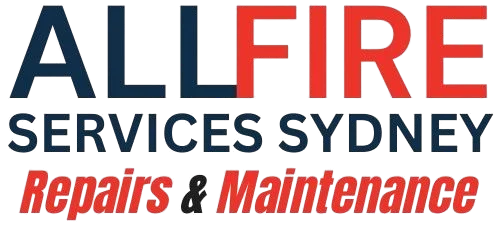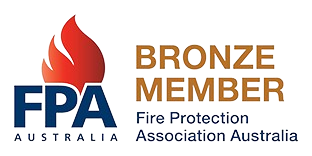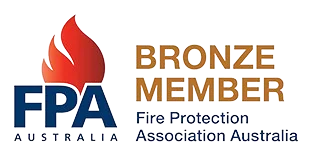Fire Safety Compliance
Ensuring the Essential Fire Safety Measures installed in buildings are in working order and performing to required Standards is critical to achieving Fire Protection goals for Building Owners, Occupants and Responding Firefighters.
Over time, the requirements for the installation of Essential Fire Safety Measures have evolved as Regulations, Codes and Standards have been updated to keep pace with Industry trends and new technologies. This constant evolution is to be encouraged in pursuit of better Fire Safety outcomes. What is also required however, is that Fire Safety Obligations do not end at the completion of building works.
Essential Fire Safety Measures are expected to perform over the lifetime of a building and are required to be routinely assessed to demonstrate that the Standard of Performance expected is capable of being delivered at anytime, should a fire incident occur.
All Fire Services is a member of the Fire Protection Association Australia, is fully Insured and abides by all relevant Standards, Codes and Regulations.
Let us provide for the first time, your complete Fire Safety Package.
Enrol now in our Annual Fire Safety Inspection Program and let us remind you when the next Equipment Service/Fire Safety Inspection is required for your property.
All Fire Services can provide you with professional Fire Fighters to take care of your Fire Safety needs. take advantage of this unique opportunity to combine real life experience with advanced Fire Safety Training and a commitment to service which sets us apart from the rest.
We provide testing, inspections, maintenance servicing and repairs to equipment for all classes of buildings on a Monthly, Bi-Annual and Annual basis. We provide inspection reports after these inspections are completed including relevant Fire Safety Statements for submission to Council.
- Total Fire Safety Solution
- Annual Fire Safety Inspections
- Annual Fire Safety Statements
- Competitive Pricing
- Qualified and Professional Service
- Fully Insured
Annual Fire Safety Statements and Compliance – New South Wales
- Annual Fire Safety Statement
- Fire Safety Schedules/Fire Safety Measures
- Fire Safety Certificate
- Fire Safety Maintenance
- Qualified and Professional Service
- Frequently Asked Questions
What is an Annual Fire Safety Statement?
In NSW, the primary legislation governing Fire Safety Requirements includes,
- Environmental Planning and Assessment Act 1979, and
- Environmental Planning and Assessment Regulation 2000
The Regulations require a Building Owner (or a person acting on the owner’s behalf) to issue an Annual Fire Safety Statement to confirm the requirements to maintain Fire Protection Systems and Equipment have been met for certain Buildings by,
- Confirming and Stating that Essential Fire Protection Equipment and Systems installed in the Building are present and capable of performing to the Standard to which they were designed and installed, and
- Confirming and Stating that, when inspected, Fire Exits (and paths of travel to Fire Exits) were unobstructed and Fire Safety Notices regarding offences relating to Fire Exits were displayed.
Each year, the the owner of a Building to which these requirements apply must ensure that the relevant Council where the Building is located is furnished with an Annual Fire Safety Statement before the due date, confiming these requirements have been met. Copies of the Statement must be sent to the Fire Commissioner – Fire and Rescue NSW [email protected] and also must be displayed in the Building. Further information can be found on the Fire and Rescue NSW website
Fire Safety Schedules/Fire Safety Measures
Since the 1st of July 1997, a Fire Safety Schedule specifying the Fire Safety Measures (both current and proposed) that should be implemented in the Building has been required to be issued by the person granting approval for or ordering the Building Works or a change of use.
This requirement applies when,
- Granting a Development Consent for a change of building use (if there is no proposed building works) or,
- Issuing a Complying Development Certificate for a new Building or for a change of use or,
- Issuing a Construction Certificate for proposed Building works or,
- Giving a Fire Safety Order in relation to a Building premises.
A Fire Safety Schedule is required to be attached to, and is considered to form part of, a relevant Development Consent, Complying Development Certificate, Construction Certificate or Fire Safety Order.
A Fire Safety Schedule is required to address the whole Building, not just the part subject to the proposed works.
The function of the Fire Safety Schedule is to identify the Fire Safety Measures currently implemented and/or proposed or required to be implemented in the Building and the required Standard of Performance for the Measures.
What is a Fire Safety Certificate?
When Building works have been completed, a Building Owner (or as person acting on the owner’s behalf) must issue a Final Fire Safety Certificate to the effect that each Essential Fire Safety Measure listed on the Fire Safety Schedule for the Building,
- Has been assessed by a properly qualified person and,
- Was found, when it was assessed, to be capable of performing to at least the Standard required by the current Fire Safety Schedule for the Building for which the Certificate was issued.
A person who carries out this assessment must inspect and verify the the performance of each Fire Safety Measure being assessed and test the operation of each new item of equipment.
A Final Fire Safety Certificate must be provided by or on behalf of the Building owner before the Building Certifier or Principal Certificating Authority can issue an Interim or Final Occupation Certificate for a Building. As soon as practicable after a Final Fire Safety Certificate is issued, a copy together with the current Fire Safety Schedule must be given to the Fire Commissioner and a further copy displayed in the Building.
Fire Safety Maintenance
The owner of a Building must maintain each Essential Fire Safety Measure in the Building to a Standard of Performance no less than that Specified in the Fire Safety Schedule or, where an Essential Fire Safety Measure is applicable otherwise than by virtue of a Fire Safety Schedule, to a Standard no less than to which the measure was originally designed and implemented.
All Fire Services Maintains and Services all makes/models and types of Fire Safety Equipment, including but not limited to,
Automatic Fire Detection and Alarm Systems

Automatic Fire Suppression Systems – Sprinkler System

Emergency Lighting
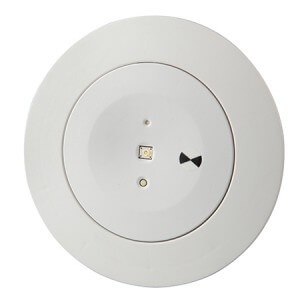
Exit Signage

Fire Alarm Remote Monitoring ASE
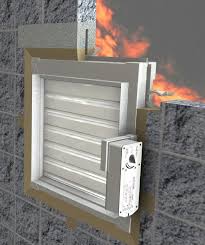
Fire Door

Fire Extinguisher
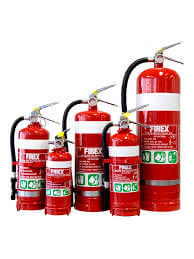
Fire Hydrant Systems and Pumpsets

Fire Seals Protecting Openings in the Fire Resisting Components of the Building
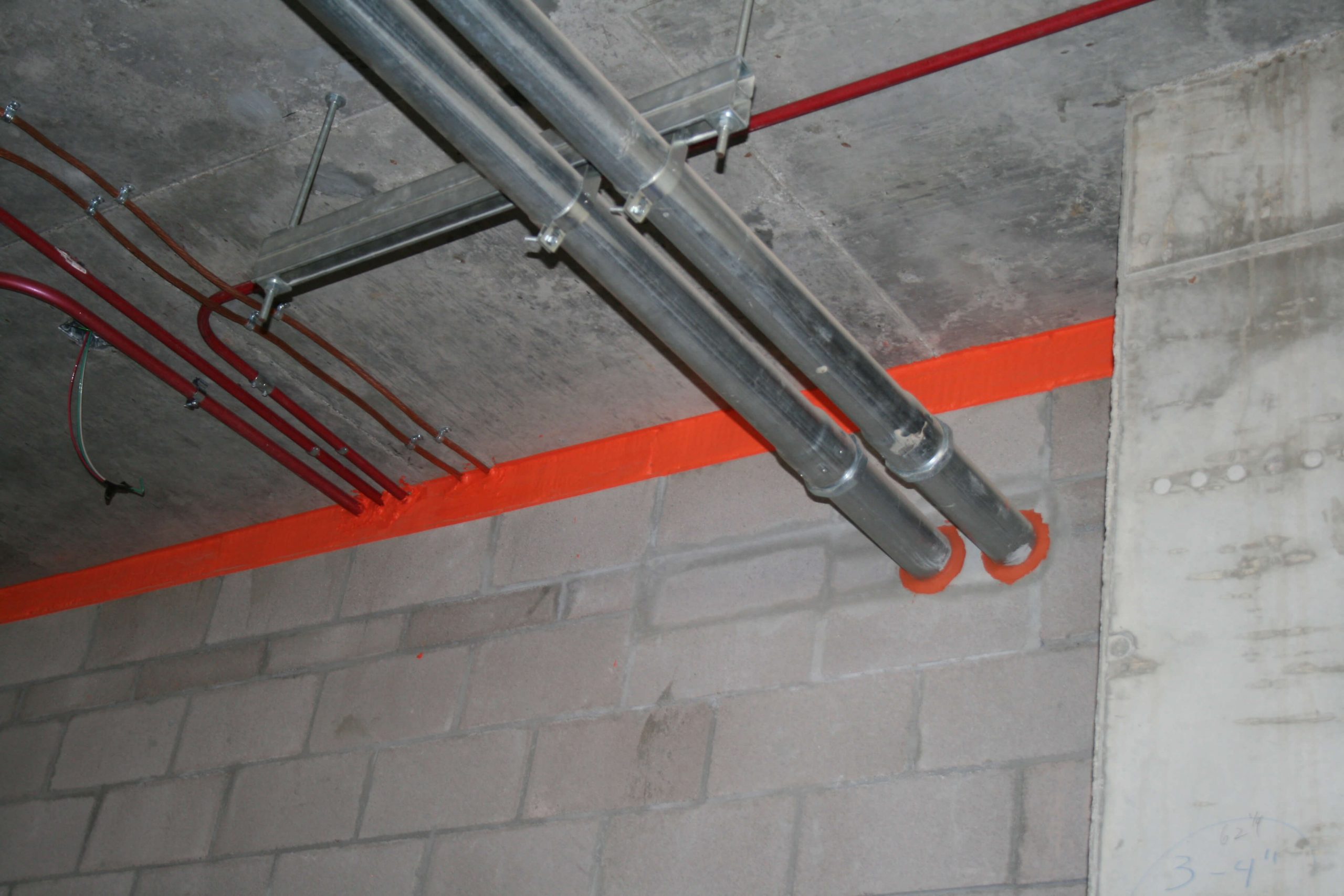
Fire Hose Reel Systems and Pumps
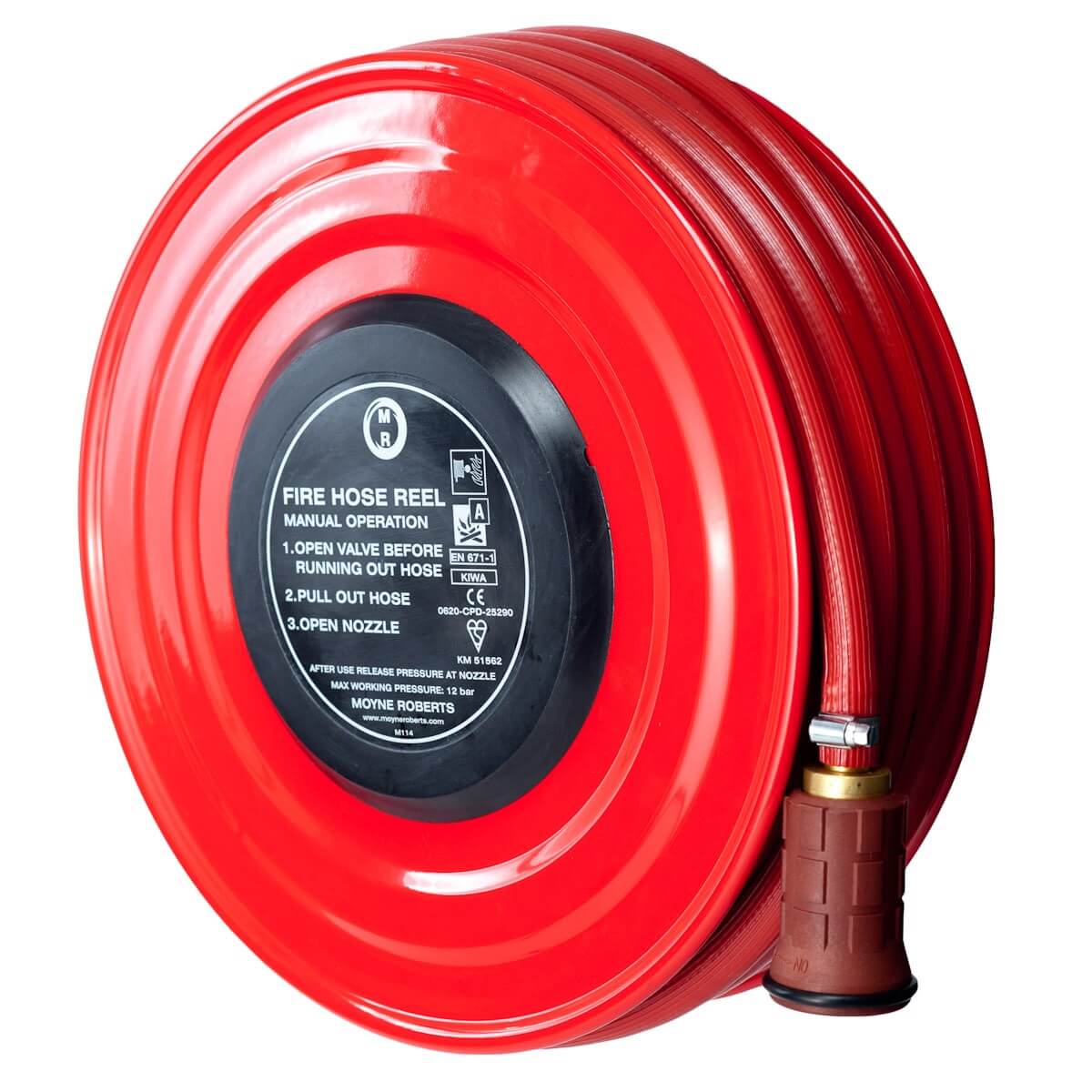
Smoke Detectors and Heat Detectors

Smoke Control Systems
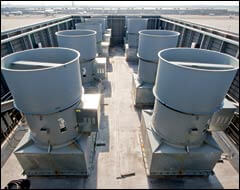
Frequently Asked Questions
What is the difference between a Final Fire Safety Certificate and an Annual Fire Safety Statement?
A Final Fire Safety Certificate is essentially a Commissioning Certificate provided by the Building Owner (or a person acting on the owner’s behalf) to the Council or Principal Certifying Authority, certifying that the Fire Safety Systems and Equipment required to be installed in a Building as part of an approval or order have been installed and are performing as required. A Final Fire Safety Certificate must be provided before completion of a Fire Order and prior to the issue of a Final Occupation Certificate authorizing a person to,
- Commence occupation or use of a new Building following works or alterations or,
- Commence a change of use of an existing Building
An Annual Fire Safety Statement is a document prepared every 12 months by the Building Owner (or a person acting on the owner’s behalf) stating that the Essential Fire Safety Measures in their Building have been assessed by a properly qualified person and are found to be present and performing as required, that Fire Exits (and paths of travel to Fire Exits) are unobstructed and that Fire Safety notices relating to Fire Exits are displayed.
What is the difference between a Condition Report and an Annual Fire Safety Statement?
A Condition Report is not recognized or required by the EP&A; Regulation. However, it is a typical way for a properly qualified person to report to the Building Owner the status of installed Essential Fire Safety Measures. This report will identify Essential Fire Safety Measures that are performing as required as well as any that are not operating or performing as required and require maintenance or repair.
Conversely, an Annual Fire Safety Statement is a Statement provided by the Building Owner (or a person acting on the owner’s behalf) confirming that Essential Fire Safety Measures are performing as required. As such any lack of performance identified must be rectified before an Annual Fire Safety Statement can be issued.
Whether a Condition Report is undertaken or not is at the discretion of the Building Owner and the terms of their engagement agreement with a Fire Protection Service Provider. However, without a Condition Report or similar, it can be difficult for Building Owners to confidently prepare an Annual Fire Safety Statement.
What is a Fire Safety Audit or Inspection?
A Fire Safety Audit or Inspection performed to Australian Standard 4655-2005 is a detailed inspection and review of the Essential Fire Safety Measures as installed throughout the building/property
Fire Safety Schedules/Fire Safety Measures?
Since the 1st of July 1997, a Fire Safety Schedule specifying the Fire Safety Measures (both current and proposed) that should be implemented in the Building has been required to be issued by the person granting approval for or ordering the Building Works or a change of use.
This requirement applies when,
- Granting a Development Consent for a change of building use (if there is no proposed building works) or,
- Issuing a Complying Development Certificate for a new Building or for a change of use or,
- Issuing a Construction Certificate for proposed Building works or,
- Giving a Fire Safety Order in relation to a Building premises.
A Fire Safety Schedule is required to be attached to, and is considered to form part of, a relevant Development Consent, Complying Development Certificate, Construction Certificate or Fire Safety Order.
A Fire Safety Schedule is required to address the whole Building, not just the part subject to the proposed works.
The function of the Fire Safety Schedule is to identify the Fire Safety Measures currently implemented and/or proposed or required to be implemented in the Building and the required Standard of Performance for the Measures.
What is a Council Fire Safety Order?
Fire Safety Orders are issued by the council where the level of fire safety within a building is found to be inadequate.
Fire Safety Orders may be issued as Emergency Orders where immediate action is required to reduce fire risk. Where an Emergency Order is issued it is imperative that the terms of the order be complied with immediately and that council is contacted to establish that the terms of the order will be complied with.
Where an Emergency Fire Safety Order is not complied within the required period the Council will immediately seek court directions to have the terms of the order fulfilled.
Where a lesser fire risk is evident or more extensive works are required a Notice of Intention to Give an Order will be issued. The notice will indicate the terms of the proposed order, the proposed period of compliance and the period in which representation must be made to the council officer who has issued the order.
In the case of fire safety upgrades the Notice of Intention to Give an Order will require that a report assessing the level of fire safety within the building and recommended action be submitted to Council within a determined period. Once the report has been found satisfactory a second Notice of Intention to Give an Order is usually issued requiring that work indicated in the recommendation of the report be carried out within a determined period.
Mechanical Smoke Control Ventilation & Stair Pressurization
All Fire Services has extensive knowledge with regards to Mechanical Smoke Zone Control Ventilation & Stair Pressurization System design/testing to Australian Standard 1668.1-1998 and the critical role these systems play in ensuring occupant safety and safe egress in the event of a fire incident.
- Protection of Life and Property
- Maintain sustainable means of egress for building occupants by preventing smoke from entering means of egress, fire stairs, fire tunnels, non fire effected floors etc.
- Reduce or contain the flow of smoke from the fire effected area into other areas of the building
- Assist Emergency Services Personnel with Search & Rescue and suppression/control of fire
- Assist in post fire smoke removal from property
Block Plans
There are 3x main types of Block Plans used to give responding Firefighters quick information when they need it should a fire incident occur,
- Fire Detection and EWIS Zone Block Plans – BCA Spec 2.2a & Australian Standard 1670.1
- Sprinkler Block Plans – Australian Standard 2118
- Hydrant Block Plans – Australian Standard 2419
Emergency and Evacuation Plans
Planning for Emergencies in Facilities, Australian Standard 3745-2010 was published 25th November 2010, superseding Emergency Control Orginisation and Procedures for Buildings, Structures and Workplaces. Work Heaalth and Safety Act and Regulations, Regulation 43 requires a person conducting a business or undertaking at a workplace to ensure that an Emergency Plan is,
- Prepared and meets certain requirements
- Maintained
- Relevant and,
- Implemented in the event of an emergency
These diagrams are intended to provide Emergency and Evacuation information for occupants and visitors, they should contain concise, clear and appropriate detail to inform occupants and visitors in an emergency.
